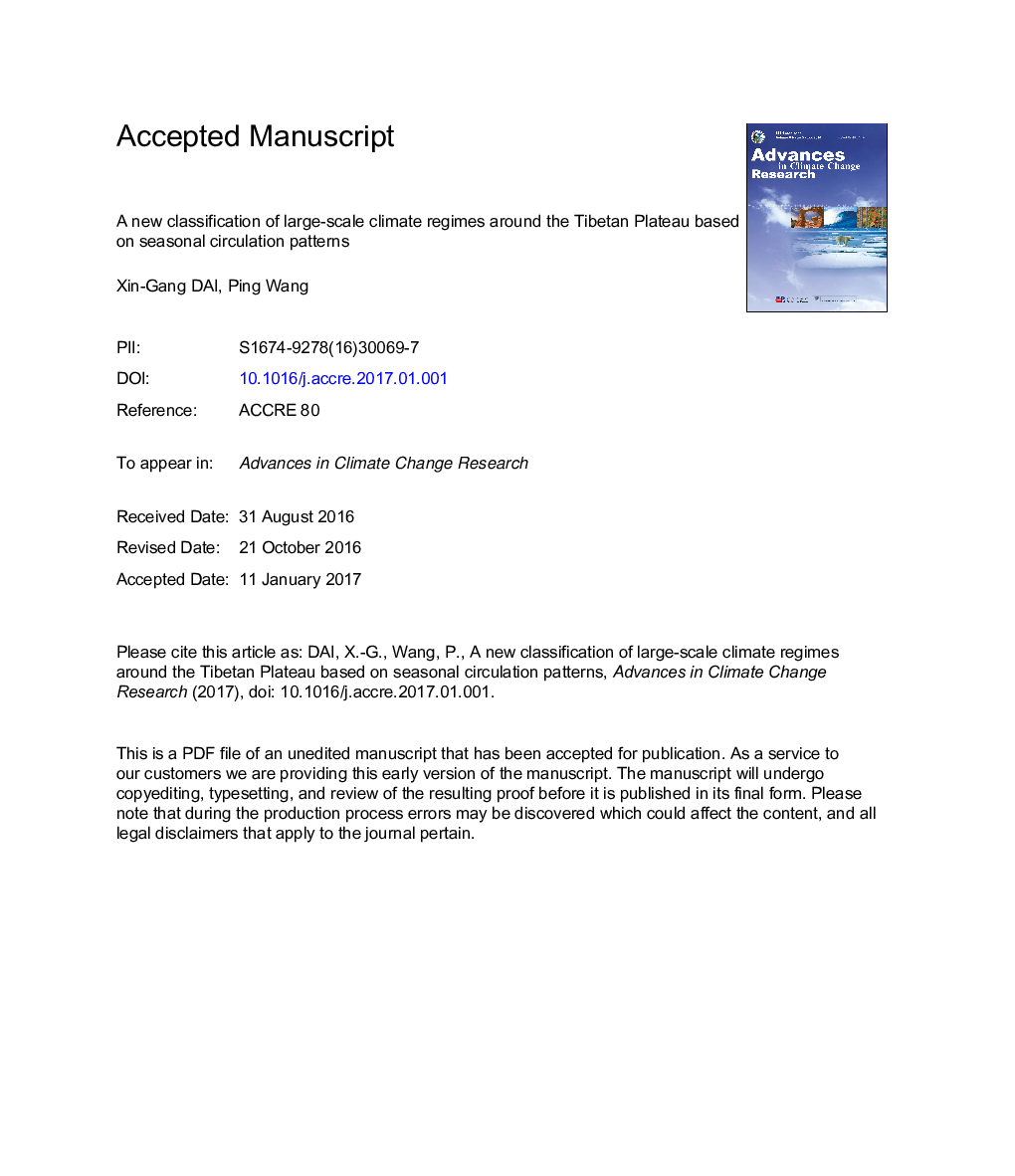| کد مقاله | کد نشریه | سال انتشار | مقاله انگلیسی | نسخه تمام متن |
|---|---|---|---|---|
| 5778987 | 1413749 | 2017 | 25 صفحه PDF | دانلود رایگان |
عنوان انگلیسی مقاله ISI
A new classification of large-scale climate regimes around the Tibetan Plateau based on seasonal circulation patterns
ترجمه فارسی عنوان
طبقه بندی جدید رژیم های آب و هوایی گسترده در اطراف فلات تبتی بر اساس الگوهای گردش فصلی
دانلود مقاله + سفارش ترجمه
دانلود مقاله ISI انگلیسی
رایگان برای ایرانیان
کلمات کلیدی
طبقه بندی اقلیمی مقیاس بزرگ، خشکی منطقه آسیا، غرب آب و هوای مدیترانه ای، حمل بار رطوبت، تبت پلاتو،
موضوعات مرتبط
مهندسی و علوم پایه
علوم زمین و سیارات
علم هواشناسی
چکیده انگلیسی
This study aims to develop a large-scale climate classification for investigating the characteristics of the climate regimes around the Tibetan Plateau based on seasonal precipitation, moisture transport and moisture divergence using in situ observations and ERA40 reanalysis data. The results indicate that the climate can be attributed to four regimes around the Plateau. They situate in East Asia, South Asia, Central Asia and the semi-arid zone in northern Central Asia throughout the dryland of northwestern China, in addition to the Köppen climate classification. There are different collocations of seasonal temperature and precipitation: 1) in phase for the East and South Asia monsoon regimes, 2) anti-phase for the Central Asia regime, 3) out-of-phase for the westerly regime. The seasonal precipitation concentrations are coupled with moisture divergence, i.e., moisture convergence coincides with the Asian monsoon zone and divergence appears over the Mediterranean-like arid climate region and westerly controlled area in the warm season, while it reverses course in the cold season. In addition, moisture divergence is associated with meridional moisture transport. The northward/southward moisture transport corresponds to moisture convergence/divergence, indicating that the wet and dry seasons are, to a great extent, dominated by meridional moisture transport in these regions. The climate mean southward transport results in the dry-cold season of the Asian monsoon zone and the dry-warm season, leading to desertification or land degradation in Central Asia and the westerly regime zone. The mean-wind moisture transport (MMT) is the major contributor to total moisture transport, while persistent northward transient eddy moisture transport (TEMT) plays a key role in dry season precipitation, especially in the Asian monsoon zone. The persistent TEMT divergence is an additional mechanism of the out-of-phase collocation in the westerly regime zone. In addition, the climate-mean MMT and TEMT are associated with the atmospheric stationary wave and storm track, which results from the uplift of orography and land-sea thermal contrast. Therefore, the paleoclimate changes in mid-latitude arid-semi-arid regions are linked to the different phases of uplift of mountains and plate motion tied to the evolution of the Mediterranean.
ناشر
Database: Elsevier - ScienceDirect (ساینس دایرکت)
Journal: Advances in Climate Change Research - Volume 8, Issue 1, March 2017, Pages 26-36
Journal: Advances in Climate Change Research - Volume 8, Issue 1, March 2017, Pages 26-36
نویسندگان
Xin-Gang Dai, Ping Wang,
